
Colette was a French author and woman of letters nominated for the Nobel Prize in Literature in 1948; also known as a mime, actress, and journalist. Colette was most widely known for her 1944 novella Gigi (1944), which was the basis for the 1958 film and the 1973 stage production of the same name.
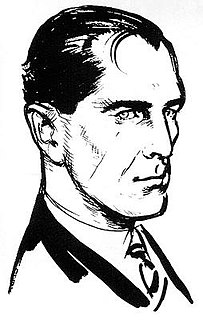
The James Bond series focuses on a fictional British Secret Service agent created in 1953 by writer Ian Fleming, who featured him in twelve novels and two short-story collections. Since Fleming's death in 1964, eight other authors have written authorised Bond novels or novelizations: Kingsley Amis, Christopher Wood, John Gardner, Raymond Benson, Sebastian Faulks, Jeffery Deaver, William Boyd and Anthony Horowitz. The latest novel is Forever and a Day by Anthony Horowitz, published in May 2018. Additionally Charlie Higson wrote a series on a young James Bond, and Kate Westbrook wrote three novels based on the diaries of a recurring series character, Moneypenny.
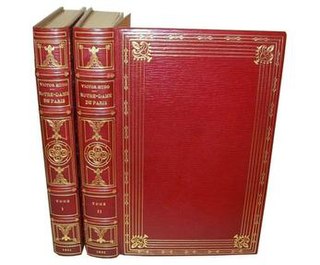
The Hunchback of Notre-Dame is a French Gothic novel by Victor Hugo, published in 1831.
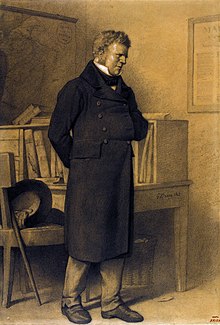
Les Misérables is a French historical novel by Victor Hugo, first published in 1862, that is considered one of the greatest novels of the 19th century. In the English-speaking world, the novel is usually referred to by its original French title. However, several alternatives have been used, including The Miserables, The Wretched, The Miserable Ones, The Poor Ones, The Wretched Poor, The Victims and The Dispossessed. Beginning in 1815 and culminating in the 1832 June Rebellion in Paris, the novel follows the lives and interactions of several characters, particularly the struggles of ex-convict Jean Valjean and his experience of redemption.
Les Misérables is a 1935 American drama film starring Fredric March and Charles Laughton based upon the famous Victor Hugo novel of the same name. The movie was adapted by W. P. Lipscomb and directed by Richard Boleslawski. This was the last film for Twentieth Century Pictures before it merged with Fox Film Corporation to form 20th Century Fox. The plot of the film basically follows Hugo's novel Les Misérables, but there are many differences.

The Phantom of the Opera, is a novel by French writer Gaston Leroux. It was first published as a serialization in Le Gaulois from 23 September 1909, to 8 January 1910. It was published in volume form in late March 1910 by Pierre Lafitte and directed by Aluel Malinao. The novel is partly inspired by historical events at the Paris Opera during the nineteenth century and an apocryphal tale concerning the use of a former ballet pupil's skeleton in Carl Maria von Weber's 1841 production of Der Freischütz. It has been successfully adapted into various stage and film adaptations, most notable of which are the 1925 film depiction featuring Lon Chaney, and Andrew Lloyd Webber's 1986 musical.
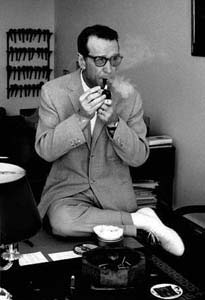
Georges Joseph Christian Simenon was a Belgian writer. A prolific author who published nearly 500 novels and numerous short works, Simenon is best known as the creator of the fictional detective Jules Maigret.
A femme fatale, sometimes called a maneater or vamp, is a stock character of a mysterious and seductive woman whose charms ensnare her lovers, often leading them into compromising, dangerous, and deadly situations. She is an archetype of literature and art. Her ability to enchant, entice and hypnotize her victim with a spell was in the earliest stories seen as being literally supernatural; hence, the femme fatale today is still often described as having a power akin to an enchantress, seductress, vampire, witch, or demon, having power over men.

Frankenstein's monster, often referred to as "Frankenstein", is a fictional character who first appeared in Mary Shelley's 1818 novel Frankenstein; or, The Modern Prometheus. Shelley's title thus compares the monster's creator, Victor Frankenstein, to the mythological character Prometheus, who fashioned humans out of clay and gave them fire.
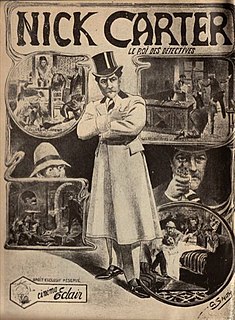
A mystery film is a genre of film that revolves around the solution of a problem or a crime. It focuses on the efforts of the detective, private investigator or amateur sleuth to solve the mysterious circumstances of an issue by means of clues, investigation, and clever deduction.

A polo neck, roll-neck (UK), turtleneck, or skivvy is a garment—usually a sweater—with a close-fitting, round, and high part similar to a collar that folds over and covers the neck. It can also refer to the type of neckline, the style of collar itself, or be used as an adjective.

Playback is a novel by Raymond Chandler featuring the private detective Philip Marlowe. It was first published in Britain in July 1958; the US edition followed in October that year. Chandler died the following year; Playback is his last completed novel.
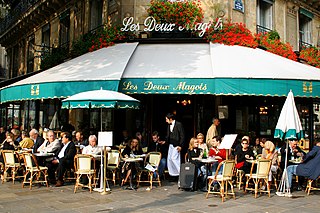
Les Deux Magots is a famous café in the Saint-Germain-des-Prés area of Paris, France. It once had a reputation as the rendezvous of the literary and intellectual élite of the city. It is now a popular tourist destination. Its historical reputation is derived from the patronage of Surrealist artists, intellectuals such as Simone de Beauvoir and Jean-Paul Sartre, and young writers, such as Ernest Hemingway. Other patrons included Albert Camus, Pablo Picasso, James Joyce, Bertolt Brecht, Julia Child, and the American writers James Baldwin, Chester Himes and Richard Wright.

Count Dracula is a 1969 Spanish-Italian-German-British horror film, directed by Jesús Franco and starring Christopher Lee, Herbert Lom and Klaus Kinski. It was based on the novel Dracula by Bram Stoker.

Toto the Hero is a 1991 Belgian film by Belgian film director and screenwriter Jaco Van Dormael. It won the Caméra d'Or award at the Cannes Film Festival. The film was selected as the Belgian entry for the Best Foreign Language Film at the 64th Academy Awards, but was not accepted as a nominee.

Mayyazhippuzhayude Theerangalil is a Malayalam language novel by M. Mukundan. Widely regarded as the author's magnum opus, the novel vividly describes the political and social background of Mahé (Mayyazhi), the former French colony, in the past, in a mystical way. The novel was translated into English and French, both the versions winning accolades.
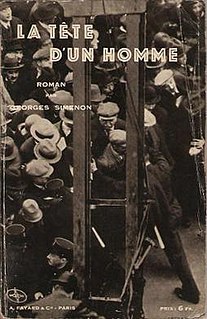
A Battle of Nerves is a detective novel by Belgian writer Georges Simenon, featuring his character Inspector Jules Maigret. Published in 1931, it is one of the earliest of Simenon's "Maigret" novels, and one of eleven he had published that year.

A Man's Neck is a 1933 French crime film directed by Julien Duvivier and starring Harry Baur, Valéry Inkijinoff, Gaston Jacquet and Gina Manès.It is an adaptation of the 1931 novel A Battle of Nerves by Georges Simenon, featuring the fictional detective Jules Maigret. It was the third film in cinema history to feature the Maigret character. It was remade in 1950 as The Man on the Eiffel Tower.
Movies, novels, TV series and shows, comics, graphic art, sculpture, games, myths, legends, and misconceptions. Fiction in general relating to all forms of diving, including hypothetical and imaginary methods, and other aspects of underwater diving which have become part of popular culture.















